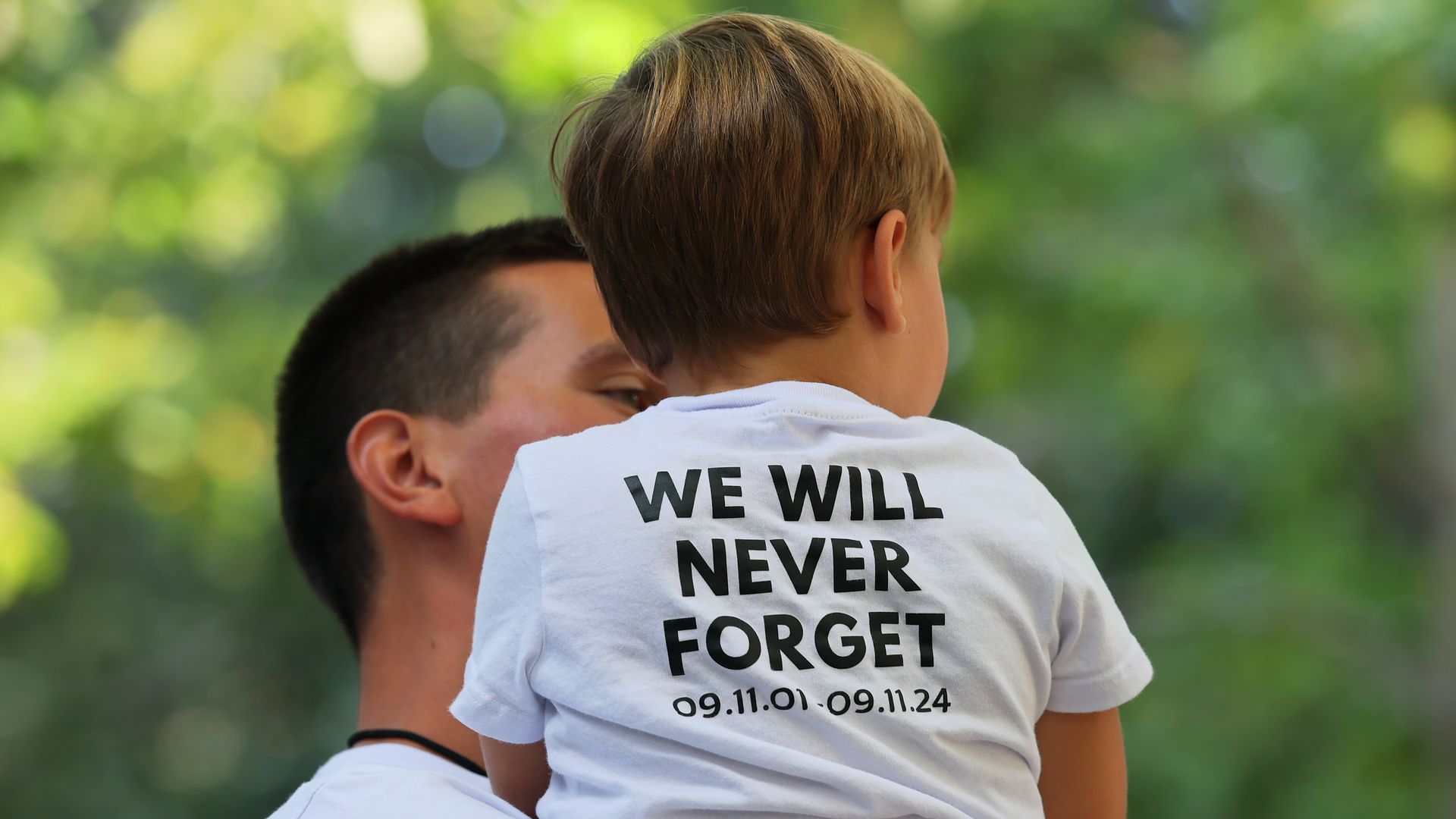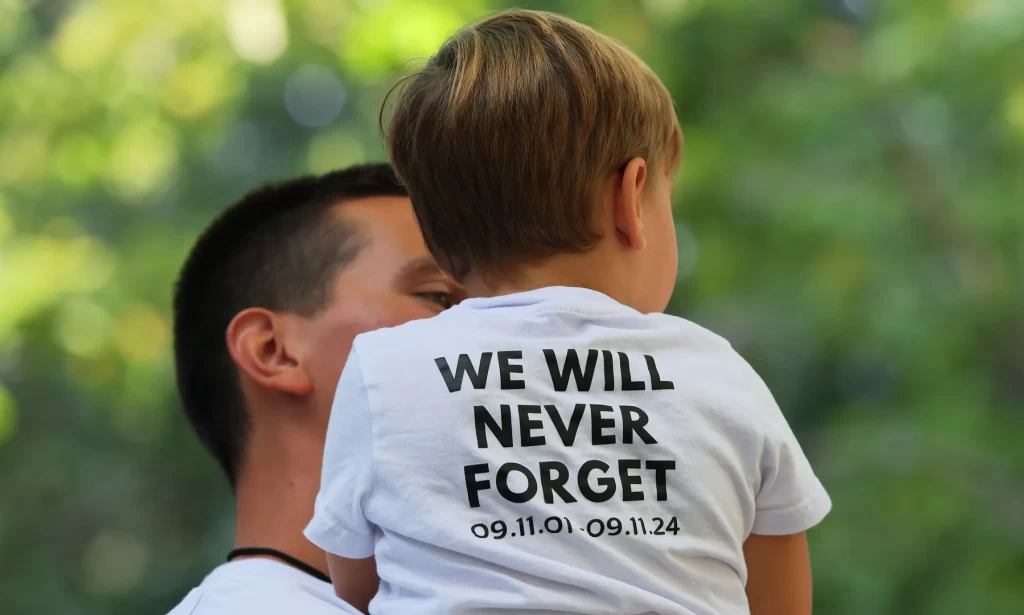Saudi Arabia's leader on Tuesday downplayed the kingdom's role in the 9/11 attacks. But an ongoing federal court case is revealing new details about Saudi officials' alleged ties to the terror plot — and the potential liability that government faces.
- The lawsuit unearthed evidence showing one Saudi official — who acknowledges aiding two men who became hijackers — made a drawing of a plane and a mathematical formula that allegedly could have been used to fly into the World Trade Center.
Why it matters: A crucial U.S. ally, Saudi Arabia's oil-rich kingdom was the first foreign sovereign to be sued in U.S. federal court under the Justice Against Sponsors of Terrorism Act of 2016 for the attacks that killed 2,977 people.
- For 22 years, the kingdom has fought the New York lawsuit, the largest and longest-active case in the federal court system with 10,000 or so families of victims and insurers seeking damages in what's been called a trillion-dollar lawsuit.
- In August, U.S. District Judge George B. Daniels determined that enough evidence exists to infer the kingdom employed two operatives to "assist the hijackers." The Saudis dispute this and are appealing.
Driving the news: Asked Tuesday at the White House about 9/11 families' anger, Saudi Crown Prince Mohammed bin Salman expressed empathy but tacitly denied his government was involved in the attack.
- "We have to focus on reality, reality based in CIA documents and based on a lot of documents that Osama bin Laden used Saudi people in that event for one main purpose ... to destroy the American-Saudi relation[ship]," he said.
- Known by his initials MBS, the 40-year-old prince was not in the Saudi government on Sept. 11, 2001. The CIA did conclude that in 2018 he ordered the killing of a Washington Post journalist who had criticized him — a claim MBS essentially denied Tuesday.
- President Trump defended him and criticized an ABC News reporter for asking tough questions directed at him and MBS.
Zoom in: The 9/11 lawsuit alleges a dozen Saudi officials were involved in the attacks on behalf of the kingdom. Two of them stand out: Omar al Bayoumi and Al Fahad Thumairy. Both welcomed two of the eventual hijackers, Nawaf al Hazmi and Khalid al Mihdhar, in early 2000 when they arrived in Southern California.
- Bayoumi, an accountant on the Saudi payroll who lived in San Diego then, helped find housing and cash for al Hazmi and al Mihdhar, and introduced them to other Saudis who aided them. He got a raise from the Saudi government while helping the two men.
- Thumairy, an imam at a Los Angeles mosque, also was paid by the kingdom but played a lesser role in the alleged conspiracy, the judge found.
- "Thumairy and Bayoumi were not just acting as an imam and an accountant," the judge said in his ruling. He said evidence indicates the pair provided "knowing assistance to the 9/11 terrorists" as part of their jobs.
Zoom out: Thumairy and Bayoumi now live in Saudi Arabia. They were deposed in the lawsuit and denied wrongdoing. They were mentioned dozens of times in the 585-page 9/11 Commission Report, published in 2004.
- But the report lacked three pieces of evidence that British police seized just 10 days after 9/11 at Bayoumi's residence in England, where he had moved:
- A plane sketch and an equation: In a deposition in the case, Bayoumi acknowledged drawing a picture of an aircraft and writing out a mathematical formula on a yellow legal pad that would help a pilot calculate a plane's altitude and distance from the horizon.
- Bayoumi also included a simple calculation: 52-8=44. Those numbers could help a hijacker figure out he's 44 miles away from the World Trade Center by passing a New Jersey beacon, 9/11 family attorney Gavin Simpson alleged during oral arguments.
- Bayoumi said in his deposition that he didn't remember why he wrote those numbers and couldn't explain why he made the calculations. "I'm somebody who likes to be exposed to things. Perhaps this was an equation that we studied before in high school," he said. "It's just an equation."
- "Most tellingly, the drawing of an airplane with equations," Judge Daniels wrote in his ruling, "facially connects Bayoumi with knowledge of the 9/11 attacks."
2. A "casing" video of the U.S. Capitol: Two years before 9/11, in June 1999, Bayoumi flew to Washington, met other Saudi officials and shot video of the U.S. Capitol and other D.C. landmarks in great detail, court records show.




You must be logged in to post a comment.